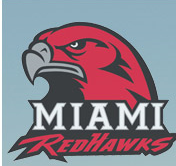How can I find the right employee (one I already have)?
Recently, I heard high ranking information technology leader complaining about the lack of completeness of  Flickr - Tambako the Jaguaremployee information (correct office phone number, IM names, etc.) in the corporate LDAP directory. This leader was relying on the technical system used to provision corporate network computing resources to be a data store for employee 'profile' related information.
Flickr - Tambako the Jaguaremployee information (correct office phone number, IM names, etc.) in the corporate LDAP directory. This leader was relying on the technical system used to provision corporate network computing resources to be a data store for employee 'profile' related information.
Now an employee office phone number probably does belong in an LDAP system, I can't argue with that, but external IM user names? Surely, the LDAP system is not the best place for these. And how about elements of the profile that are not related to 'devices' (phones, computers, etc.). Things like experience, skills, interests, connections, and career plans. All these, and many other attributes, combine to paint the full picture of the employee talent profile.
It is no secret that companies are under extreme pressure to leverage their internal talent, when faced with enormous marketplace challenges, and for most, little to no ability or funding to seek external talent, either new hires or contractors.
So let's take an example of a possible situation where an organization might need to rapidly leverage the 'rich' employee profile data it needs to capitalize on an opportunity. A logistics and distribution organization, in an effort to expand to a new line of business and capitalize on a market opportunity, enters into agreements to begin supplying services to a high-end retail chain, it had not previously served. The challenge - identify rapidly a project team with the necessary skills, competencies, experience, and contacts to support sourcing new product, developing new distribution strategies, and with an understanding of the higher end of the market than they usually support.
Employee Profile Data - Sources
Legacy HRIS systems - These are typically decent repositories for basic information about the employee profile that may help our company assemble their project team. Things like position or assignment history, demonstration of growth in salary grade or level might assist the Project Leader in assembling a team. But key information would certainly not be present in a typical HRIS, thing like career aspirations, competencies, training plans, and experience prior to joining the company. Many of the larger ERP-based systems may have the capability to 'fold-in' this kind of talent profile data, but most implementations of ERP do not extend very deeply into these areas.
Talent Management Systems - all good Talent systems will contain aspects of the key data needed to build the project team: information on past performance, current skills and capabilities, and possibly information on training and development that the employees have taken. These are all key pieces of the puzzle. Recently some larger Talent Management vendors have developed more rich 'profile' capabilities, SuccessFactors being one. Usually missing from these types of systems, especially ones that very rigidly look to automate performance management processes, are indications of employee 'fit' or perhaps desire to be included in this type of project team. The information gleaned from these systems can tend to the strictly analytical, and not give the Project Leader any 'soft' insight. And finally, these systems are not in place today in many, many organizations.
Internal Social Networks - In the last couple of years the market for so-called 'Corporate Social Networking' has grown rapidly. The idea is to deploy a platform or solution that provides the employees sort of a 'Facebook' like experience, usually augmented with the knowledge management and creation features of blogs, wikis, rss, and forums. These systems usually have a profile feature that allows the employee to supply much of the same data they would typically post on popular external social networks. They can also utilize the Twitter concept of 'following' other employees to keep aware of the contributions of content, comments, and other information for the key influencers in their internal network. These systems provide the Project Leader with a wealth of information relevant to the building of the team, they can review specific work products and content created by employees, they can see feedback left by other employees, and the profile data can typically be mined for keywords or 'tags' that may indicate the right experience or inclination for participating on the new project. Some vendors to consider in this space are SelectMinds, HiveLive, and Socialcast. This really is an emerging space, and relatively few organizations have deployed these internal networks.
External Social Networks - Jason Averbook from Knowledge Infusion has stated 'LinkedIn knows more about your employees than you do'. The truth is, many (or most) of your employees are providing vast quantities of personal and professional information on external sites like LinkedIn and Facebook. Key information like employee authored statements of skills and aspirations, former employers and assignments, third-party recommendations of their work, and some insight into their networks both inside and outside the company that they may be able to leverage to make the new project a success. Did any of your employees formerly work for the high-end retailer you need to serve? This information is likely on LinkedIn.
Should your company simply encourage employees to register for these sites, provide their information, while you take advantage of the information and profile data for essentially almost no cost? Of course the downside could be your competitors for the same talent could mine the information as well, but honestly they probably are already doing just that.
That really just scratches the surface of the various options that organizations face when trying to develop a strategy for capturing, analyzing, and making actionable their strategic talent data. Most larger organizations may be utilizing some kind of combination of the above approaches, or may have even built custom systems to help locate talent and deploy talent (the big professional consultancies for one).
Lots of options, lots to think about, a complicated topic.
I would love your thoughts and comments.

 Steve
Steve



